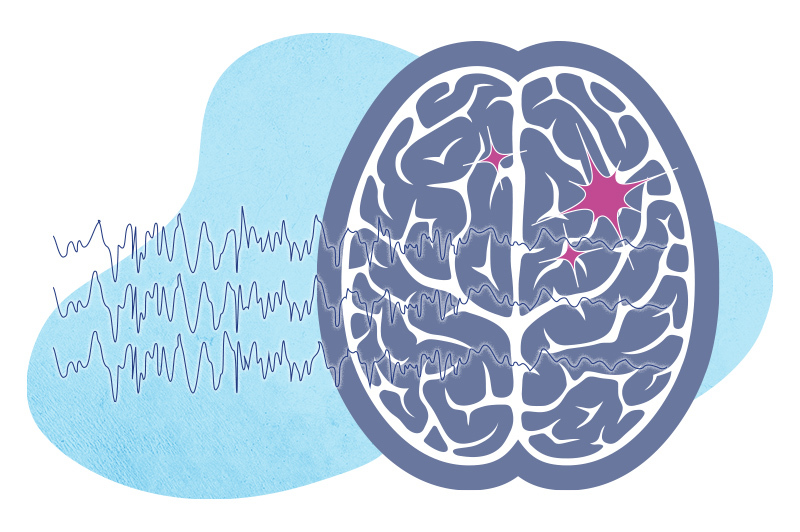Status epilepticus (SE) is a life-threatening neurological condition characterized by prolonged or repeated seizures without recovery of consciousness in between. Clinically, it is defined as a seizure lasting more than 5 minutes or two or more seizures between which the patient does not regain full consciousness. It demands immediate medical intervention to prevent irreversible neuronal injury, systemic complications, and death.

Classification of Status Epilepticus
Status epilepticus is categorized based on seizure types and response to treatment. Accurate classification aids in targeted therapy.
1. Convulsive Status Epilepticus (CSE)
Characterized by tonic-clonic activity. This is the most common and dangerous form, associated with high morbidity and mortality.
2. Non-Convulsive Status Epilepticus (NCSE)
Presents with altered consciousness, confusion, or subtle twitching. Often underdiagnosed due to its less overt manifestations.
3. Refractory Status Epilepticus (RSE)
Defined as SE that does not respond to initial treatment with benzodiazepines and a second-line antiepileptic drug (AED).
4. Super-Refractory Status Epilepticus
SE that continues or recurs 24 hours or more after the onset of anesthesia, even while under anesthetic treatment.
Pathophysiology of Status Epilepticus
During SE, persistent neuronal excitation leads to excessive glutamate release, loss of inhibitory GABAergic control, and breakdown of the blood-brain barrier. This results in:
- Increased metabolic demand
- Hypoxia and lactic acidosis
- Autonomic dysfunction
- Cellular apoptosis and brain damage
Etiology and Risk Factors
Multiple underlying conditions can precipitate status epilepticus. Prompt identification of the cause is crucial for targeted management.
- Acute CNS insult: Stroke, traumatic brain injury, CNS infections (meningitis, encephalitis)
- Abrupt AED withdrawal
- Metabolic disturbances: Hypoglycemia, hyponatremia, hepatic or renal failure
- Alcohol intoxication or withdrawal
- Low AED serum levels in known epileptics
- Autoimmune and genetic epileptic syndromes
Clinical Presentation
The manifestation of status epilepticus varies by type but typically includes:
Convulsive SE:
- Sustained tonic-clonic movements
- Cyanosis
- Unresponsiveness
- Tongue biting, urinary incontinence
Non-Convulsive SE:
- Altered behavior or cognition
- Inappropriate movements (e.g., lip-smacking)
- EEG abnormalities are key to diagnosis
Diagnostic Evaluation
1. Immediate Bedside Assessment
- Airway, Breathing, Circulation (ABCs)
- Blood glucose check (rule out hypoglycemia)
2. Laboratory Workup
- Complete metabolic panel, CBC
- Toxicology screen
- AED serum levels
- Lumbar puncture if infection suspected
3. Neuroimaging
- CT or MRI to identify structural causes
4. Electroencephalogram (EEG)
- Essential for diagnosing NCSE
- Continuous EEG for refractory cases
Emergency Management and Treatment Protocol
Time-sensitive intervention is the cornerstone of effective status epilepticus treatment. A stepwise protocol is followed:
Phase 1: Initial 0–5 Minutes
- Ensure airway patency, oxygen, IV access
- Check blood glucose, administer thiamine and dextrose if needed
Phase 2: 5–20 Minutes – First-line Therapy
- Administer benzodiazepines
- Lorazepam 0.1 mg/kg IV (max 4 mg)
- Alternatives: Diazepam or Midazolam (IM or IN)
Phase 3: 20–40 Minutes – Second-line Therapy
- If seizures persist, administer IV antiepileptics:
- Fosphenytoin, Levetiracetam, or Valproic acid
Phase 4: 40–60 Minutes – Refractory SE
- Initiate continuous IV anesthetics:
- Midazolam, Propofol, or Pentobarbital
- Intubation and ICU monitoring
Supportive and Long-Term Care
ICU Monitoring:
- Continuous EEG
- Cardiorespiratory support
- Fluid and electrolyte balance
Treatment of Underlying Etiology:
- Infectious: Antivirals/antibiotics
- Metabolic: Correction of deficits
- Structural: Neurosurgical consultation
Recurrence Prevention:
- Review and optimize AED regimen
- Educate patients and caregivers on adherence
Prognosis and Outcomes
The outcome of status epilepticus depends on:
- Duration before seizure control
- Patient’s baseline neurological status
- Etiology (e.g., stroke or anoxia worsen prognosis)
- Promptness and effectiveness of treatment
Mortality rates range between 10–30%, with higher rates in elderly patients or those with RSE. Early intervention significantly improves neurological recovery.
Prevention Strategies
- Adherence to prescribed AEDs
- Regular monitoring of serum drug levels
- Avoiding alcohol and known triggers
- Prompt management of fevers and infections in known epileptics
- Educating families in seizure first aid
Status epilepticus is a neurological emergency demanding swift diagnosis and aggressive treatment. Adherence to a well-structured treatment protocol significantly reduces morbidity and mortality. Multidisciplinary involvement, continuous monitoring, and preventive strategies are vital in improving long-term patient outcomes and preventing recurrence.
Frequently Asked Questions:
What is the first-line treatment for status epilepticus?
Intravenous lorazepam is the recommended first-line treatment due to its rapid onset and longer duration of action.
How long must a seizure last to be considered status epilepticus?
A seizure lasting more than 5 minutes qualifies as status epilepticus.
What causes status epilepticus in known epileptics?
Common triggers include missed AED doses, infection, stress, or metabolic derangements.
Is status epilepticus fatal?
If not treated promptly, it can result in permanent brain damage or death, especially in refractory cases.
Can non-convulsive status epilepticus be diagnosed without EEG?
No. An EEG is essential for diagnosing NCSE due to its subtle presentation.